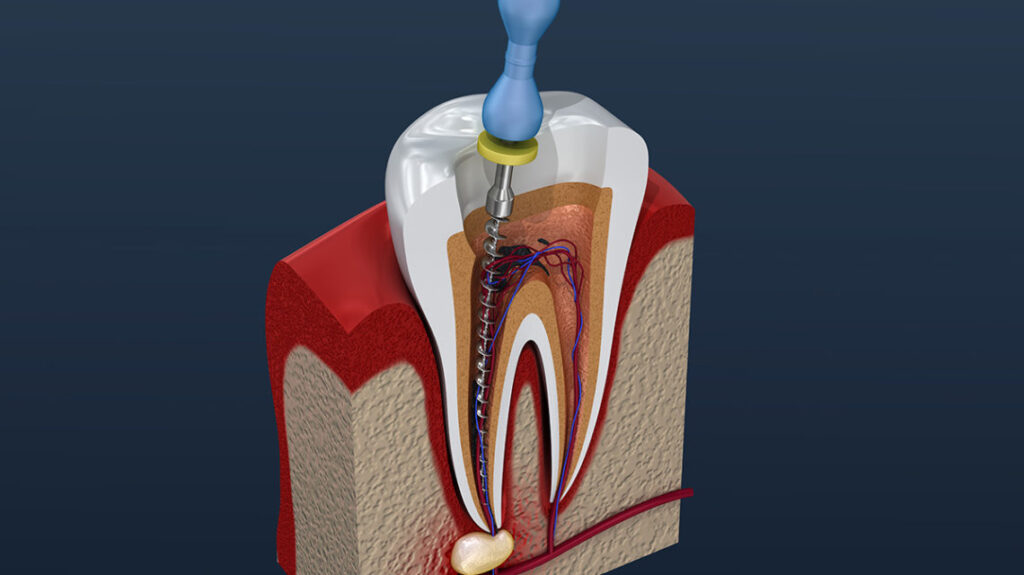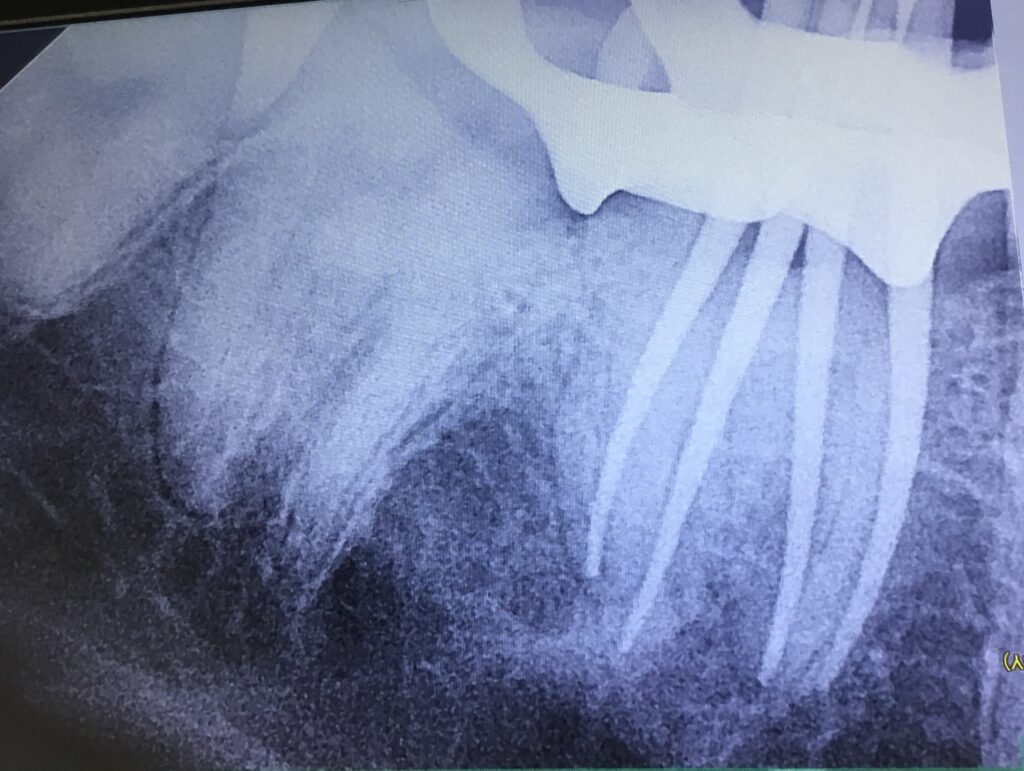Root canal is a procedure which involves removal of the pulp to repair a badly damaged or infected tooth instead of removing it.
What is Root Canal?
The word “root canal” refers to the process of cleaning the canals within a tooth’s root. Root canal procedures used to be excruciatingly unpleasant. With modern dental technology and local anaesthetics, most people experience little to no pain throughout a root canal procedure. In reality, living with a rotting tooth is probably more painful. Extraction of the injured tooth and replacement with a dental implant, bridge, or removable partial denture are all root canal alternatives.
The nerve and pulp are removed, and the inside of the tooth is cleaned and sealed during a root canal surgery. Without treatment, the tissue around the tooth may get infected, leading to an abscess.

How it is done?
Root canal treatment is usually performed by an endodontist or general dentist. Root canal treatment usually requires one or two visits, but occasionally additional visits are required because some teeth are difficult to treat.
First, you need to check the extent of the damage through a dental X-ray. You will also receive local anesthesia to control the pain. If the tooth has an abscess, the pain may be worse.

Then, a rubber-like sheet called a dental dam is put into the oral cavity to keep the teeth clean, protected and saliva-free. The caries are removed and an opening is formed through the crown to enter the pulp cavity. Use small dental instruments to remove infected or diseased pulp.
After removing diseased pulp, the pulp cavity and root canal are rinsed and cleaned. Sometimes medicine is placed in the pulp cavity and root canal to clear any infection. The teeth can be pushed open for a few days. If the infection has spread beyond the teeth, you may be prescribed with antibiotics. If the root canal requires multiple inspections, temporary fillings are placed with the crown to protect the teeth and prevent debris and saliva from entering. Avoid chewing the teeth until they are treated and restored.
